Emergency water storage is essential to any preparedness system. Your ability to access and clean water sources will assure you have the water your family needs in a disaster. However, storing bottled water in your home is just not efficient.
While the standard is 1 gallon per person per day, in reality you would need about 3 if you factor in things like cooking and cleaning and probably much more if you have a garden that needs watering, which is a standard for most preppers.
To store 3 gallons of water per person per day for a month would be 360 gallons each month for a family of four! A 24 pack of 16oz water bottles is only gonna be about 3 gallons of water total. Simple math dictates that you are gonna need 120 cases of water, for a family of four, each month! Where does all that go?
Therefore, many preppers set up 55-gallon rain barrels on their downspouts to harvest rainwater. These are 55 gallons per clip and can be used for everything from drinking to washing to cooking. Of course, nothing is perfect so there are some pitfalls you need to avoid when harvesting rainwater.
Let’s look at 7 mistakes to avoid when harvesting rainwater.
Related: Does Water Really Expire?
Construction
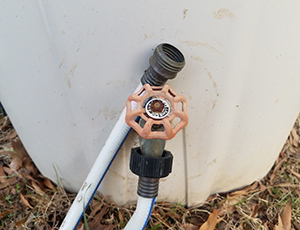 My earliest rain barrels were just sad. They always leaked. They would be full after a rainstorm and then hours later the water level would be down below my poorly constructed spigot. If you have or make poorly constructed rain barrels it is going to defeat the purpose.
My earliest rain barrels were just sad. They always leaked. They would be full after a rainstorm and then hours later the water level would be down below my poorly constructed spigot. If you have or make poorly constructed rain barrels it is going to defeat the purpose.
You need a way to cut these barrels effectively and a waterproof adhesive to keep the spigots in place. If you cut a jagged hole it will be harder to seal the spigot in without leaks. Take your time and do it right the first time.
Overflow
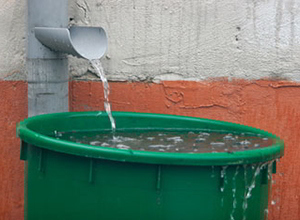 You are probably accustomed to seeing a spigot on the bottom of the rain barrel. This is where you hook up the hose to gain easy access to your stored water. You should also place another spigot a few inches from the top of your rain barrel. This will become on your overflow spigot.
You are probably accustomed to seeing a spigot on the bottom of the rain barrel. This is where you hook up the hose to gain easy access to your stored water. You should also place another spigot a few inches from the top of your rain barrel. This will become on your overflow spigot.
The overflow spigot should be tilted upward when installed to allow for a slow release of water that is above this fill line. You don’t want a bunch of water spilling over the edge of your rain barrel and settling around your home’s foundation.
The overflow allows your barrel to stay full but not expose your foundation to a massive overflow so easily.
Screening
 Mosquitoes are the worst. If you really want some bad mosquitoes the best thing to do is create a 55-gallon mosquito larvae farm to terrorize you and your family. Without a fine screen these little blood suckers will be popping out of the surface of your rain barrels and they will be hungry
Mosquitoes are the worst. If you really want some bad mosquitoes the best thing to do is create a 55-gallon mosquito larvae farm to terrorize you and your family. Without a fine screen these little blood suckers will be popping out of the surface of your rain barrels and they will be hungry
The screen will also keep your water free of debris that could blow in during a storm or make it down the gutters. Screen is cheap and easy to work with. Just cut it a little larger than the mouth of the rain barrel and use a large rubber band to secure it.
I use a screen and I add a few capfuls of bleach to my rainwater, too! This will kill off those pesky mosquito larvae.
Gutters
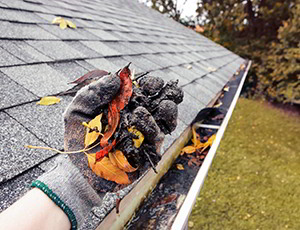 Not all mistakes happen at the rain barrel level. Harvesting rainwater also involves your roof and your gutters. If your gutters are full of debris it could limit your rain harvesting capabilities, it could allow sticks and other debris to damage your rain barrel screen. Your water will also filter through all kinds of foliage that you might not want in your drinking water.
Not all mistakes happen at the rain barrel level. Harvesting rainwater also involves your roof and your gutters. If your gutters are full of debris it could limit your rain harvesting capabilities, it could allow sticks and other debris to damage your rain barrel screen. Your water will also filter through all kinds of foliage that you might not want in your drinking water.
Gutter guards or consistent cleaning will assure you have clean water and a fully operational rain harvesting system.
Sanitization
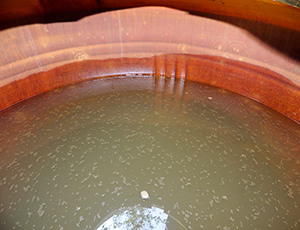 No matter where you live or how you harvest the rainwater be sure that you treat it. It should be filtered and sanitized by boiling or the use of bleach to kill any bacteria or parasites. Never assume your water is safe to drink.
No matter where you live or how you harvest the rainwater be sure that you treat it. It should be filtered and sanitized by boiling or the use of bleach to kill any bacteria or parasites. Never assume your water is safe to drink.
If you drink water directly from your rain barrel you run the risk of contracting waterborne illnesses that will require you to use up much more water and resources to recover.
There are some pressurized jerry cans on the market and they are a great tool for this. The jerry can fills to about 4 gallons of water and the included filter is good to roughly 10,000 gallons! Buy some unscented bleach and store it for a number or uses, water sanitization included.
Related: Disinfect Huge Amounts Of Water With This Common Household Item
Origin
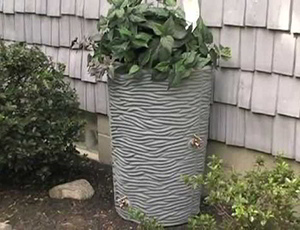 Not every barrel is appropriate for harvesting rainwater. Lots of barrels hold dangerous, flammable, or poisonous materials before they wind up emptied out and considered as a potential rain barrel. If your family will be drinking out of these barrels you want to be sure they cleaned, food grade barrels. Settle for nothing less.
Not every barrel is appropriate for harvesting rainwater. Lots of barrels hold dangerous, flammable, or poisonous materials before they wind up emptied out and considered as a potential rain barrel. If your family will be drinking out of these barrels you want to be sure they cleaned, food grade barrels. Settle for nothing less.
If you have money to throw at this problem of procuring rain barrels to harvest rainwater, there are some great premade options out there. You can buy decorative barrels, or you can buy barrels that have little grow areas on top of them. There is cool stuff out there
Local Regulations
 This is where things get interesting. Some people aren’t happy with the idea of you harvesting rainwater. Some local governments claim they own the water that falls out of the sky and even create laws to keep you from having and using a rain barrel.
This is where things get interesting. Some people aren’t happy with the idea of you harvesting rainwater. Some local governments claim they own the water that falls out of the sky and even create laws to keep you from having and using a rain barrel.
If you find yourself in this situation you have two options:
- Don’t harvest rainwater
- Establish a cover rainwater harvesting system.
Now, number 2 might sound like a complicated ordeal. However, a cover rainwater collection system is not that tough to accomplish. You are going to have more work to do than the average person and it’s gonna cost you more…
Rain barrels can be buried, and a simple pump can be used to fill buckets or containers. Rain barrels can be well concealed in the backyard of a home with something as simple as a fig tree. Foliage will cover these barrels and only those searching for them would know they exist.
Be a good neighbor, too! Most of these infractions are reported by neighbors.
3rd option: Move away from the crazy place that thinks it owns the water.
Related: Is Harvesting Rain Water Illegal in Your State?
Water is essential and it’s a rare resource that you will die without in a short time. Our hyper convenient lifestyle means that we disregard the infinite source of water that runs through our home. If an emergency cuts that off, life gets vastly different in a hurry.
From hygiene to hydration emergency water storage is key to surviving any SHTF scenario. The population will suffer from something like ‘water shock’ when they realize there is nothing coming out of the tap.
I don’t recommend storing all your water indoors. Use rain barrels to harvest rainwater because, for most of us, its cheap and easy. Be sure you have filters and sanitation methods for water, include a little bottled and stored water for convenience. Avoid the 7 mistakes we mentioned, and you will be prepared for a water emergency.
You may also like:
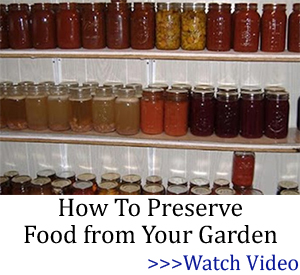 The SHTF Diet: Minimum Food And Water Supply For 3 Months
The SHTF Diet: Minimum Food And Water Supply For 3 Months
New Invention 12X More Efficient Than Solar Panels (Video)
How to Build a Water Purification System in 10 Minutes

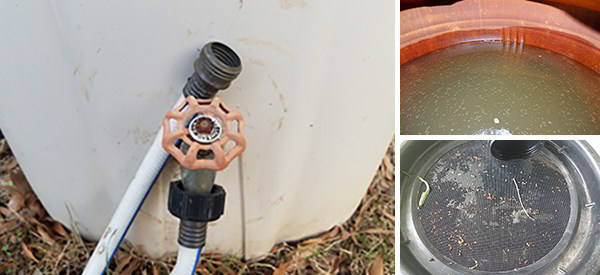













What about keeping them from freezing?
If there is going to be a hard freeze–temperatures below 32 for three days or more–I empty out my rain barrels into plastic jugs (I use leftover plastic jugs from lightweight cat litter) and keep those in the basement. Allowing the water to freeze in the barrels can crack them as the ice expands, but it has to be pretty cold for that.
I do not keep bleach for long term storage I use pool shock and make my own 2 gallons at a time in a bucket
Gotarunner, This has peaked my interest! I’d be interested to know how much pool shock to you add to a two gallon bucket? Is there any difference from the Clorox you buy at the store? Would I affiliate myself in the process if I needed to mix it indoors? If you have the. Han e to respond, inquiring minds would love to know! I don’t have a pool, so this is all news to me!
water is a god given gift i can’t imagine it to be illegal but I’m not surprised I guess. its a matter of what goes on in Los Vegas stays in Los Vegas lol
What God giveth, the tax-man taketh away….. In wetter areas cities will tax you on rain water run-off…. any area the rain doesn’t hit the ground to soak in, is taxed to compensate overworked storm sewers ( roofs, drives, parking lots, etc…..
Here in the big city, we are fortunate to have had city fathers who understood the need for water and put in place a massive reservoir system so we now have an abundance to share. We have a contract going with Coca-Cola where they bottle it and sell it under the Dasani Brand name. Look for it in your local market. On tap NYC water is what you’ll be drinking.
CC: but it’s probably better than 99% of the wells across the country. After all, most of your water comes from upstate, dairy country. Plenty of deer and beaver, and pine trees. nature nuts love it. Ah, the delicate flavor a la Bovine! Want bad water go to Hazleton, PA. All thru mining country they have a mercury problem, acid water, and other minerals. One sister lives along the Susquehanna River. Her ex used to tell the kids, “Flush twice, Harrisburg needs the water.” I said it might be funny, but remember, they say the same upriver in Wilkes-Barre an Scranton. NYT tap, Bossy’s donations and all, looks better all the time 🙂 niio
Red, DEP sends out annual reports done on water quality analysis. There are testing sites within each area that are included in the statistical analysis. All in all, it’s the one thing that we do get that I know I get my money’s worth! Unlike Manhattan, where there are 100 year old pipes, Interruptions in service are rare in my area, but if there is, Its never a problem as I keep plenty of water on hand. Always have a big pot full on the stove too for cooking.
CC: I remember seeing articles of them digging up old white pine logs used as pipe. In part, they were used because pine kills germs and most parasites. Pine tar isn’t expensive and a little goes a long way. We save what we buy. First chance you get, MOVE. PA is overrun with liberals, but Hispanics (especially from NYC) hate dems. Appalachian Mtns are good, often with a very good infrastructure. Deep South, usually also very good. Most Western states and some Midwest like Ohio are good places. The more rural you get, the more conservative it is but the main entertainment is always gossip. And don’t buy Kali-fornian avocados because they raise them on sewer water to get that extra-large size (Hey-lo, LCC, you angel of a man :). niio
At what temperature should the pantry be kept, year-round?
Below 70 degrees ideally. Each 10 degrees lower about doubles the storage life of many foods I’ve read.
BRILLIANT!! Thanks for the tips. Excellent article Claude, you too Mr. Watson:)
When I built my house we used 21″ of pea gravel below the basement floor. When my sump pump went out it took over two days to fill that cavity with water. If we run short of water, adjust your sump pump to retain more ground water. Virtually an endless supply of pretty clean water. Filter as needed.
Our problem is cracking. today is only 113 degrees
Cracking in north central Texas, too, 105. Shrews like to set up house down in the cracks that are 15 to 20 inches deep.
Harvesting rain water is great, but don’t expect to survive on it alone after SHTF.
It would be nearly impossible to store enough rain water for a family of four to exist on year round.
Most climates have “dry” spells of several months duration. So without the ability to catch and hold several thousand gallons of rain water( or tens of thousands of gallons in case of a drought), you will not survive on it post SHTF.
Then if you plan to garden, all those plants will need some of that water during those dry spell months also.
Mic: Of course storing rain water is not going to solve your water problems. It will help with your water problems. I don’t plan on using water off my roof or just plain rainfall into five wading pools I have for catching straight rainfall for drinking purposes, but it certainly is good for watering vegetables and herbs and if strained and boiled I might use it for washing clothes. That depends upon a lot of factors. I might even use it for trade in the wintertime. We sometimes get more water than we can store — not very often but some years. Once in the 50+ years I have lived here we had two 500 year storms within a week of each other. Based on averages, that means we won’t have another 500 year storm for 1,000 years. Yeah, right.
Even if you have a lake or some other body of water nearby, having stored rain water means that you won’t have to schlep water from the body of water to put on plants.
The rain water may be enough to last until you can bring in your harvest, get your veggies canned, so that you can use them when you have to leave for a locale that has water immediately nearby.
I wouldn’t just say, “Well, it won’t last for a whole year, so no point in saving rain water.” In my opinion better to have more water than you know what to do with than The other extreme.
A family of 4 at a min of 1 gallon a day would be 360 gallons for a couple of months not thousands of gallons. I don’t agree that a gallon a day is enough but that seems to be the number people like to throw around. Water for plants is something most don’t think about
When you install your drain faucet if you do install one, make sure you leave enough room to get something under the faucet to get the water out. This is especially important if you use your rainwater for watering your plants.
If you don’t leave enough room to attach a hose to the hose bib on the water tank, you will be forced to use the dip method to get the water out of your barrel. Or put the barrel on something so you have enough room to get the hose on the hose bib. I have three rain barrels sitting on cement blocks so that I can get the hose on them. Too soon old; too late smart.
Conversely, don’t put the drain faucet too high up on the barrel. I have a commercially produced barrel furnished by our city to save rain water and the dodo who installed the drain faucet put it about 12 inches up from the bottom of the barrel. Lots of room to install the hose for plant watering, however it leaves about a quarter of the barrel unable to be drained without titling the barrel, a manor annoyance but sometimes a minor annoyance becomes major repeated enough times.
In an EOTW situation, any water not used for drinking can be used for watering plants. In the handbook about homesteading that Claude and I reviewed a couple of weeks ago, the homesteader actually used the urine that he and his wife generated for plant fertilization. I would have to go back and re-read how they utilized it as I did not commit the book to memory. I’m so old they said I would never use more than 64K of memory and my memory banks are spilling over full now.
A chemist buddy of mine was a vegetable gardener and an avid composter, and he used urine to provide Nitrogen to the pile. Diluted, I use it to fertilize my SE TX St. Augustine lawn.
So far I’ve only used the rain barrel to water the small garden near the house. BUT if I wanted to put a tiny bit of bleach in it, would it kill the veggies/flowers?
That’s what I was wondering also
No, Chlorine won’t hurt your plants. Do you use house water to water your plants now? Most folks here in SoCal use water that has come from the water treatment plant to water their plants and lawns. That has not only been treated with chlorine but with chloramides which isn’t supposed to be good for fish although it was the raccoons and the bobcat that did in my koi, not the chloramides in the water.
Now, if you use so much bleach that the water reeks of chlorine, that might have an adverse affect. What I would do is use the chlorinated water on just one plant for a while and see how it does. Be sure to keep careful records of how much chlorine you use viz. a viz. how much water you put the chlorine in.
I would use just enough chlorine to keep little swimmers out of your rain barrel. It is so easy to put a piece of window screen over the top of barrel and secure it with a bungee cord why fool around with chlorine and possible plant burn?
Go to a big box hardware store and buy a piece of plastic window screen wide enough to fit over the top of your barrel and put it in place. If you have a lid for the barrel you won’t even need a bungee cord, you can use the lid to hold it in place.
I have plastic 55 gallon barrels. I didnt want steal barrels as they rust. But any way thanks for the tip!!!
Yo!. I like the idea of buried barrels for two reasons. 1) Arizona, and unless the barrel is sun-proof (haha) it’s going to crack fast. 2) Water thieves. While pretty much everything is going solar here, today, eventually solar pumps will wear out or be wrecked by some souless weenie. At this point, Arizona averages 3 inches below normal rainfall. For many of us, that’s 20%-30% below average. even with so little, rainwater catchment would supplement garden needs. pray for rain! niio
My parents raised a family of 9 kids on ‘just’ rainfall.
In AU many rural and remote regions have no access to town water. All my life it’s been either rain or bore/well water, never filtered and the only times I’ve suffered from tummy bugs has been in town.
Now I know we are fortunate to have minimal pollution, parasites and such liveIng in our vastly underpopulated land mass but water is the No. 1 scarce commodity we have so we use rain water for the house and dam water for the stock and garden. On 500 acres we have 5 dams and every roof has 5-20,000 gal tanks, concrete, poly and lined tin. Now we don’t get cold weather so we don’t have to worry about freezing and what was said about gutters and roofs is spot on. so first flush of rain goes to waste and then caught. Things like 3 minute showers or a bath in 2inches of water where the cleanest go first and the water reused down the line to the dirtiest working man, each time a little emptied out and hot water added; use half a glass of water to clean your teeth not a running tap; don’t wash your hair every day unless you’re really dirty (working in a piggery or cutting hay etc).
Some things are worth using More water ie washing dishes but don’t run a tap to rinse, use less water with a boiling kettle in a large bowl.
Half flush toilets were made for AU and save a lot of water. We use dam water piped to the loo cistern but rain water in all the other taps. Still when out in the bush I’ve bathed myself and my kids in a cattle trough or water hole and drunk out of them too. And don’t forget that gravity doesn’t stop just cos the powers out so overhead tanks on a hill or stand mean you have water when others don’t. Not a fan of pressure pumps on my shower and if anyone has tried it they’ll know what I’m talking about.
So it does take a bit of forethought to live off rain water, not impossible. Animals and garden can do well on straight bore or dam water (which is just rain caught water anyway) and if you need, filter the rain for yourself. On our farm all the underground water is salty but we have some soaks which are usable for stock although I wouldn’t want to drink it, one does get so used to the taste of pure water.
Ginny: Been there, done that, and rainwater tastes better than well, and well far better than city, which is often mixed with treated sewer water. we live in the eastern copper belt, which runs from the San Carlos Apache reservation deep into Mexico. Plenty of mineral in the water here, too, but salt isn’t the problem Phoenix has. In case of emergency, we can use solar stills. This dude, down near Sahuarita, makes all of us look sick when it comes to hoarding water. Yet, the family is comfortable. homesteadenomics https://www.youtube.com/watch?v=BHoMkcDqnCE
A happy spring! niio
Sorry Red, that comment was supposed to be posted under Mic’s comment about it being near impossible to use rain water for a family of 4 or the EOTW
You can get used to the minerals in water although I know some people can’t tolerate them well.
Checked out the vid and that’s how our house is set up but with bigger tanks like this.
https://www.youtube.com/watch?v=5_0zfjrRmyk
Our smallest on ground is a poly 5000gal imperial, not sure of the conversion since your 55gal we call 44gal drums or 205litres. Our tank on the stand for gravity is 3000gal. At 25ft head it gives pretty good pressure.
August has been lovely and wet and the rain is just starting to trickle into the dams which were nearly all empty, especially the ones we draw on for the garden which I was hoping to be bigger this year but I failed there. Been scything the weeds which have taken over, a few each day when the weather permits especially the Small Flowered Mallow which is hip high in places.
A happy fall to you too.
Ginny: Yeah, I watched that YouTube, but Arizona? I like the idea of going in ground where people who don’t know us won’t know where the water is. While the local population is small and miles of mountains and range land are all around, Tucson is only 45 miles south, and the interstate I-10 corridor is turning into a 100 miles long housing development. Especially there, people are putting water barrels inside garages. Water pumping stations are mostly solar here, and the rest ready to convert. But, what happens in SHTF? People who don’t have solar will steal the units. Then all hell breaks loose.
I always liked the scythe. We had three and they were used on the lawn in Pennsylvania, which made the ground hogs happy. Dwarf clover grew thick with the grass down and they let the garden alone. niio
Well I do have the advantage that every house and shed for 50kms in every direction has rain tanks since no-one has scheme water outside of major towns and cities here. Even our local town with 2 families has to provide it’s own water. People here would be more likely to pinch water out of the dams, we have at least 3 near the road, but so do all the neighbours as the road makes for great catchment. I agree about the solar pumps though as morals go out the window with very little provocation these days.In hot weather we even get the occasional skinny dipper 😉
I agree, I like the idea of inground tanks but the one we started off with was damaged from tree roots so we filled it in. Might be doable with poly tanks but time is not kind to concrete or tin inground. I have seen one house with two massive tanks built under the house in what would best be described as a cellar but access was from outside, not inside the house and it wasn’t a room, just house stumps and foundations with cladding.
Ginny: As long as they’re not skinny dipping in the drinking water.
Tree roots are the only thing I worry about, but with temperatures climbing into triple digits every day for months, it might be worth it. Someone asked if I were going to put in a sauna in the bathhouse (it came with the place). I said why bother? Just stand in the bathtub and turn on the cold water, then enjoy the steam ha ha.
Much thanks for your input into the tanks. We may just got above ground, then wall it off with adobe block to hide the tank. niio!
Red- Missed my flight one summer a few years back in Phoenix because of a change in the weather! Never saw such expansive flooding before! So fast! So high! Water up to my knees in the parking lot in mere minutes! Everything at PHX cancelled. Your in ground containment system must also be a smart way to capitalize on that!
CC, every storm now, there are flash flood warnings. This area is between two very steep mountain ranges, and we still rarely see water in the San Pedro river. head north along it and yes, Dudleyville and other places risk flooding. We can only hope to catch up this winter. The Bighorn fire came within 6 miles of town, but when it hit cattle country, it stopped. Cattle break down wood dead material and that means termites can break it up. No one has taken wood from the wilderness areas for decades. May it rain, here! I’m to take a flight to PA later on, and you know it will, then 🙂 niio
You can hook two water barrels up in tandem. Just get washing machine hose which has a female coupling on each end and connect them to the hose bib on the water barrels.
You can go threeses if you use a Y coupling on the main barrel and then washing machine hoses to the two other barrels or there are even quad faucet couplings if you get a lot of rain or have a lot of water barrels.
If you don’t have an old washing machine hose around, you can buy an adaptor for not very much money that will make an ordinary garden hose have a female coupling on each end.
If you hook up another barrel or two to your main barrel you don’t have to worry about overflow. Or shouldn’t have to. If you get a 500 year storm or a hurricane, overflow questions are moot. But then you will have so much water around you won’t be able to tell the difference anyway.
The only Jerry can I am seeing are gas cans? I don’t see anything about filters in them either. Can you provide a link in the right direction?
I typed in 5-gallon portable water jug and all sorts of water jugs popped up from collapsible soft water jugs to water jugs that look just like jerry cans. Amazon has them, Home Depot has them. Walmart — I haven’t looked, but I suspect you can buy them at Costco. You can buy them insulated to keep your water cool.
Most water jugs don’t come with water filters. You need to buy a water filter separately to fill the jug. Again there are a myriad of water filters in the market suitable to filling a 5 gallon jug.
I actually typed in water jugs and found them. Thank you for answering tho. I appreciate it..
I have 5000 gallons of treatable water stored in my above ground pool. The only chemical I put in it is chlorine, a few days of evaporation and the chlorine is gone, so it’s safe to filter and boil. I found a great new water filter material, it clarifies the water but doesn’t purify it, Poly balls, like big cotton balls made of polyester. You can fill a 5g bucket that has a drain in the bottom with poly balls, fill the bucket with water, then open the drain. The material removes debris down to 5 microns.
Our favorite thing to do is spend a week or two camping in the desert back country at Big Bend National Park. Water management is critical. A gallon a day per person for washing? 1 gallon a week per person for washing is more like it, fill a gallon camp shower, hang it up in a tree, soap up and rinse. Bathing every day after SHTF would be silly. Learn to cook with very little water. Cooking rice is an efficient use of water, but most vegetables you should roast or saute in a little bit of oil. To clean up I pour 1/2 inch of water in a pan, heat it to a simmer, use the hot water and a cloth or paper towel to wipe all the dirty dishes down, throw the left over water on a plant. For bathroom, you’d best study up on building a privy.
Controversial comment: hand washing is way over rated.
BTW I shower twice a day at home…
TSC sells big tanks in various sizes. Set it close enough to your house to catch rain water, and for nosy neighbors, paint it like a little garden shed or a play house( be sure to include windows and door). I don’t know how the tax man would look at it, but you have a large catchment system, and most people wouldn’t know it is your emergency water storage.
Right now, colemans.com is selling 500 liter military water bags for under $100.00. They are military surplus. According to my dashboard calculator 500 liters is like 170 gallons. They are pretty big, but not like a water tank and are designed to be carried by personnel — a lot of personnel. 170 gallons is over 1300 pounds, so they are not easily portable, but the price is right, I think. That’s like 3 55-gallon drums in a rubber bag.
I know the Marine Corps used rubber bladders to store avgas in the field. Those bladders were 500 gallons because the Corsairs and AD Skyraiders the Marines were using then sucked up avgas like crazy and it took a lot of them to keep a squadron in the air. So if a “rubber” bladder could store 500 gallons of avgas in the field, I would suspect that it is no big deal for a “rubber” bladder to store 170 gallons of water.
I use rubber advisably because while the material has the characteristics of rubber, I don’t have a clue as to the actual chemical make-up of the storage material.
Don’t forget plastics. Boiling is good to congeal microscopic plastics. Still wouldn’t use it to drink unless as a last resort or with a straw,fine for most other uses. China is pouring out the chemicals in the atmosphere, another consideration. What goes up, comes down in precipitation, except certain gases. Just consider it all, as toxins accumulate in people, up the food chain. Then there are the chemtrail issue.